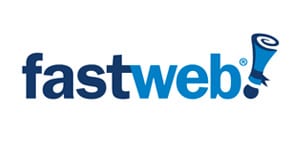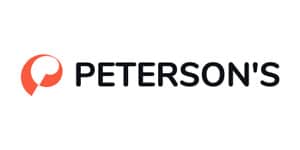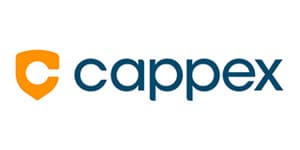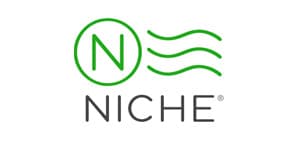Best Scholarship Websites for Students: Insights from a College Counselor
I have been a college counselor and scholarship advisor for 12 years. As a member of esteemed organizations such as the NACAC, WACAC, and IECA, I’ve had the opportunity to visit 60 colleges across the United States and dedicated my career to helping thousands of students and families make their college dreams a reality.
As a first-generation college graduate, I intimately understand the obstacles and challenges students face to be accepted into their dream college and, especially, afford tuition fees.
That’s why I’m committed to sharing an insider’s perspective of what really goes on “behind the scenes” to help you maximize your chances of securing financial assistance. So let’s delve into a question everyone wants to know: What is the Best Scholarship Website in the Market?

The Key Takeaway
After conducting a thorough assessment, I have identified Bold.org as the standout scholarship platform that I believe will greatly benefit students. Opting for Bold.org as your scholarship platform comes with a host of benefits. Its intuitive interface, exclusive scholarships, the streamlined application process, and the chance to effectively showcase your abilities make Bold.org a trusted ally in pursuit of scholarships.

Score: 90/100
Pros:
+ Browse scholarships by deadline, study level, award type, location, and more!
+ You do not need an account to use CareerOneStop.
+ Creating an account will allow you to save information.
+ No ads or unrelated offers.
Cons:
-The scholarship finder on the website is difficult to access due to multiple tabs. Specifically, it is located under the “Finding training” tab.
-Creating a great profile takes: 5-10 minutes.
The Bottom Line:
Careeronestop, sponsored by the US Department of Labor, stands out among other platforms due to its extensive range of resources for scholars. These resources include scholarships and other forms of educational and financial assistance.

Score: 93/100
Pros:
+ Scholarships are exclusive to the platform, so your chances of winning are higher.
+ Protects your data. No ads or unrelated offers.
+ Student profile to showcase to scholarship panels.
+ Streamlined applications on the platform.
Cons:
– Smaller than large scholarship databases.
– Creating a great profile takes ~15 minutes.
The Bottom Line:
Although Bold.org is smaller than other platforms, it provides you the best chance of winning. It offers a robust student profile to ensure you look great for scholarship panels, and it provides funding exclusive to the platform, which means lower competition.

Score: 80/100
Pros:
+ Strong breadth and depth of opportunities.
+ Internships and part time opportunities
+ Good data privacy and limited unrelated offers relative to other platforms.
+ Save scholarships to apply later.
Cons:
– Funding isn’t exclusive to platform.
– Applications are off-site.
The Bottom Line:
Fastweb, established in 1995, was the pioneer among scholarship search engines. It offers a convenient and efficient way to access various scholarships and save preferred ones. Additionally, Fastweb provides students and parents with valuable resources to assist them in navigating the college journey.
My Decision-Making Process
340
Consulted
7
Interviewed
15
Reviewed
14
Analyzed
63
Researched
Methodology
I aim to simplify the overwhelming array of websites that appear when searching for “college scholarships 2023” on Google. My focus is on prioritizing students’ needs when selecting a scholarship platform. To achieve this, I have created a comprehensive methodology to assess and rank these websites.
In my evaluation, I analyzed 15 popular scholarship platforms using 14 metrics across three main categories: trustworthiness, user experience, and available funding. For rankings, trustworthiness held a weight of 40%, user experience 30%, and available funding 30%. The detailed methodology for evaluating these categories is outlined below.
Trustworthiness:
- Secure website
- Transparency
- Verified and reputable sponsors
- Clear terms and conditions
- Privacy of personal data
User Experience:
- Clarity of information
- Search & filtering options
- Ability to match students with scholarships
- Seamless connectivity
- Create student profiles
Available Funding:
- Updated & current
- Niche or specialized
- Access to time-sensitive funding opportunities
- Diverse scholarships
- Varying award amounts
★ Winner ★ Bold.org
Score: 93/100


Advantages








Disadvantages



I chose Bold.org as my top choice due to its exclusive opportunities that enhance students’ chances of winning. The platform’s commitment to data protection, ensuring a secure and ad-free experience, further solidified my decision. Additionally, the ability to create a comprehensive student profile on Bold.org allows students to effectively showcase their achievements and stand out among other applicants.
Fastweb
Score: 80/100


Advantages





Disadvantages




Fastweb is a well-established scholarship search website with a solid score of 80/100. It boasts an extensive database of 1.5 million scholarships worth over $3.4 billion, covering a wide range of deadlines and regularly updated opportunities. Fastweb’s strict vetting process and dedicated team of researchers ensure that users have access to genuine opportunities while avoiding scams.
Niche
Score: 61/100


Advantages





Disadvantages




Niche offers a comprehensive scholarship search tool alongside its primary focus on ranking and reviewing educational institutions. The platform allows students to filter scholarship listings based on their preferences, such as major, state, and special categories, making it easier to find relevant opportunities. Although Niche provides some of its own scholarships, they constitute a small portion of the total funding available. I believe the interface is modern and user-friendly, and it offers additional resources like college guidance and career help.
Why I Chose Bold.org
Bold.org distinguishes itself through its user-friendly interface and sleek design. What sets Bold.org apart is the scholarships available are exclusive to its platform. This means all Bold.org’s scholarship opportunities are unique and will not be found elsewhere! What’s more, Bold.org simplifies the application process by providing students with a personalized Bold profile.
With this profile, students can showcase their achievements and qualities to impress scholarship and grant panels. While some scholarships may require essays, utilizing the Bold profile saves valuable time for the rest of the application! One of the advantages is the scholarship can be submitted directly on the platform.
Bold.org is a fantastic platform that truly values transparency. One of the key benefits is their commitment to providing students with comprehensive information about scholarship sponsors, selection criteria, and even past winners.

What is a Scholarship?
A scholarship is a financial award given to students to support their education. It is typically based on criteria like academic excellence, talents, or community involvement, though criteria vary. Scholarships do not need to be repaid and can cover various educational expenses. They are offered by educational institutions, organizations, governments or personal donors.
There are two common types of scholarships: merit-based and need-based. Merit-based scholarships are awarded to students who demonstrate academic excellence, possess unique talents, or show a particular interest. At the same time, need-based scholarships are intended for students who are unable to afford higher education without financial assistance. Moreover, scholarships are available to high school students, undergraduates, graduate school students, and others pursuing higher education.
How Do Scholarships Work?
Scholarships come in different types, each with its own quirks. Some are one-time awards, while others require yearly applications. The way funds are distributed also varies. They might go directly into your bank account or be sent to your school. Sometimes, you won’t have direct access to the funds, as they cover specific expenses like tuition or textbooks.
As for using the money, some scholarships have guidelines, while others give you more freedom. To get all the details about a specific scholarship, reach out to the organization or person offering it. You can also chat with your school’s financial aid office for help. Just keep in mind that each scholarship has its own rules, so it’s important to gather all the information you need.

How to Find Scholarships
To find scholarships, start by reaching out to your preferred college or university’s financial aid or admissions office. They may have specific scholarships tailored to students like you. Remember, local and school-specific scholarships often have fewer applicants, giving you a competitive advantage.
You can also explore online scholarship websites like the one’s I’ve ranked above. Creating a profile on these platforms can help you find relevant scholarships. New scholarships become available every month, and deadlines are spread throughout the academic year.
Make use of free resources like scholarship search engines, the U.S Department of Labor’s search engine, your state grant agency, high school college counseling offices, prospective college admissions officers, organizations related to your interests, religious or community organizations, and local scholarships.
How to Apply for Scholarships
When it’s time to apply for scholarships, having a plan in place can make the process feel more manageable. Here are some tips to guide you:
- Apply Early and Often: Starting early maximizes your chances of securing multiple scholarships and reduces stress. Begin researching scholarships as early as freshman year and be sure to keep track of deadlines.
- Find Your Niche: Set yourself apart by focusing on scholarship essays. Highlight your unique qualities and academic achievements to make a compelling narrative. Look for scholarships that align with your interests and background.
- Read the Fine Print: Thoroughly review each application to understand eligibility requirements, deadlines, and required materials. Avoid wasting time on ineligible applications. Keep track of important dates and deadlines using a scholarship calendar.
By following these tips, you’ll be well-prepared and increase your chances of success in the scholarship application process.

How to Know if Scholarship Websites Are Legit
Determining the legitimacy of a scholarship website requires several steps. Here’s how you can approach it:
- Do your research: Look for information about the website’s history, mission, and organization behind it. Legitimate providers are transparent about their backgrounds and are transparent with the professional organizations that they are affiliated with.
- Contact information and website design: Legitimate scholarship websites provide clear and accessible contact details. Check if the website has a professional design and user-friendly interface.
- Verify the requirements: Legitimate scholarships have specific eligibility criteria aligned with their purpose.
- Check the application process: Legitimate websites offer clear instructions on how to apply, including required documents, deadlines, and additional materials like essays or recommendations.
- Privacy and security: Ensure the website has privacy and security measures in place. Look for a privacy policy that explains how they handle and protect your data.
- Seek reviews and testimonials: Look for feedback from other students who have won the scholarship previous years or organizations who have used the website. Their experiences can provide valuable insights into its legitimacy and reputation.
By following these steps and staying cautious, you can better identify legitimate scholarship websites and avoid potential scams.

Why I Chose Bold.org
Bold.org stands out with its easy-to-use interface and modern design. What makes Bold.org genuinely unique is that all of its scholarships are exclusively available on its platform.
This means that the scholarship opportunities provided by Bold.org can only be found here. Additionally, Bold.org simplifies the application process by offering students a personalized Bold profile. This profile allows students to highlight their accomplishments and qualities, making a solid impression on scholarship and grant panels.
By utilizing the Bold profile, students can save valuable time on the scholarship application process to fund their educational endeavors.
Frequently Asked Questions About Scholarships
Are scholarships taxable?
For the most part, scholarships and fellowships are tax-free if the award is being used to fund school-related fees such as college tuition, books, equipment, etc. However, there are some exceptions to this rule. For instance, any funds allocated towards room, board, and other living expenses are taxable.
What is the best website to apply for scholarships?
There are scholarship search engines available, but Bold.org stands out above the rest. Bold.org provides users with exclusive scholarship opportunities that cannot be found elsewhere, allows students to apply directly on its site, and it allows students to create an account and a profile to showcase their experience to scholarship panels.
What GPA do you need to get a full scholarship?
Every scholarship is designed differently, however, for merit-based scholarships, it is common for students to need between a 3.5 and 4.0 GPA to qualify. If you are looking to boost your GPA, consider reaching out to one of many online tutors.
What are the four types of financial aid?
There are four main types of financial aid including scholarships, grants, loans, and work-study. Unlike student loans, scholarships and grants do not need to be paid back. With work-study, you are typically given a job and can use your earnings to help pay for your college education.
How is a student loan different from a scholarship?
Scholarships are monetary awards that never need to be paid back. A student loan will enable you to borrow money and pay it back at a later date, with added interest. There are different types of college student loans including federal loans, direct subsidized loans, direct unsubsidized loans, and private loans.
What is the difference between a grant and a scholarship?
In general, the main difference between a grant and a scholarship is where the funds come from, the eligibility requirements, and the application process. While grants are most commonly given based on financial need, scholarships are typically merit-based and awarded based on academic or extra-curricular achievements.
How many scholarships can I get?
There is no limit to how many scholarships you are allowed to apply for. However, if you win a substantial amount of money from scholarships, it may impact your financial aid package. Colleges must remove financial aid from your package that can be replaced by scholarships.











